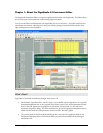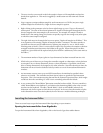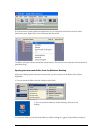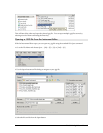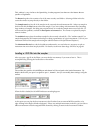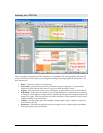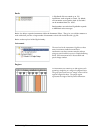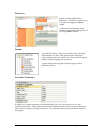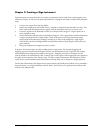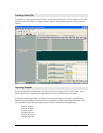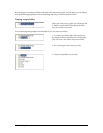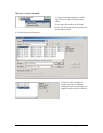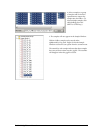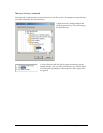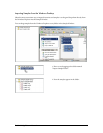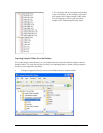
TASCAM GigaEditor 4 Manual 13
Chapter 2: Creating a Giga Instrument
Giga instruments can range from the very simple (an instrument can be made from a single sample) to the
extremely complex. In any case, the general procedure for creating an instrument consists of the same basic
steps:
1. Create a new, empty le in the Giga Editor.
2. Import the samples your instrument will use. Samples are imported from individual .wav les. e
editor will bundle the samples into the .gig le with the instrument when you save your work.
3. Create the regions on the keyboard to which your samples will be mapped. A region spans one or
more contiguous notes.
4. Dene dimensions and their splits in the keyboard regions. is is optional, but without dimensions
a region can play back only a single sample. Much of the power of the Giga instrument design
derives from the fact that many samples (currently up to 256) can be mapped to a single region,
while MIDI control and intelligent MIDI rules determine which of those samples will sound at any
given moment.
5. Map your samples into the regions you have created.
In practice, the last three steps are oen combined into a single action. For example, dragging and
dropping a group of samples into the Region Window can automatically create a region for each sample,
while simultaneously mapping the samples to the regions. Dropping a second set of samples into the
Velocity Window can automatically create a velocity split in each region, while mapping the new samples to
the upper or lower portion of the velocity range. For more complex instruments, the Instrument Wizard
can be used to create multidimensional instruments and map many sets of samples in a single operation.
For the sake of illustration, this chapter focuses on the simpler and frankly more tedious ways to assemble a
Giga instrument. As you gain familiarity with the Editor, you’ll learn how to perform many of these tasks
in much more ecient ways.



